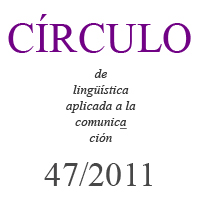Teaching Spanish phonetics to Scottish and Northern Irish speakers
Keywords:
variedad dialectal, interlengua, transferencia positiva, interferenciaAbstract
This paper deals with one of the most frequently forgotten areas in the teaching of Spanish as a foreign language: pronunciation. The phonetic/phonological distance between the L1 and the L2 of the learners is of paramount importance to master the sounds of the L2; however, it is the phonetic/phonological distance between the dialectal region of the speaker’s L1 (DR1) and the L2 of the speaker that will have the biggest influence in this learning process. After comparing linguistic peculiarities of the English language in general, and of the Scottish and Northern Irish variety in particular, with those of Castilian Spanish, we proceed to analyse the interlanguage of students of Spanish from Scotland and Northern Ireland. This enables us to understand the positive and negative transferences and assist us in creating a catalogue of the interferences to be corrected. Finally, to eliminate the interferences present in speakers of this regional variety of British English, we present a list of exercises based on coarticulatory processes.Downloads
Published
2011-10-17
Issue
Section
ARTÍCULOS/ ARTICLES

